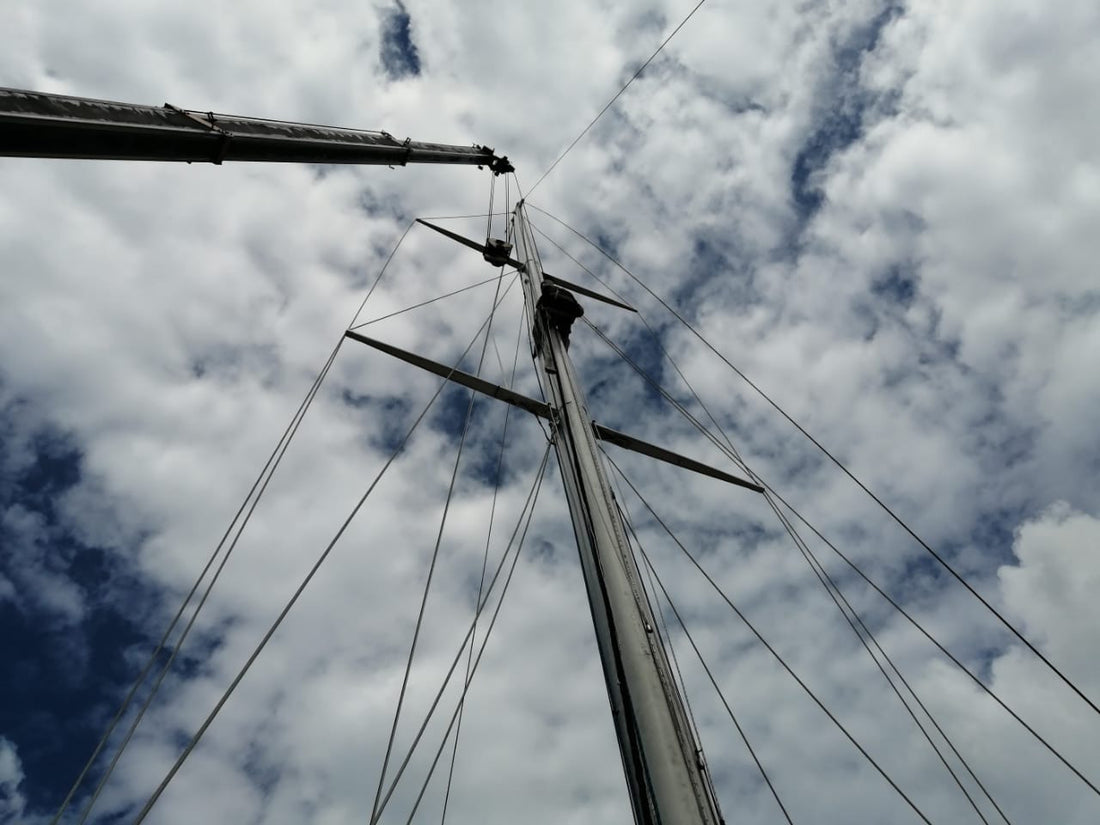Let's talk Swages
I conduct several rig inspections every month, and one of the common issues I spot is cracks in the swages of the standing rigging. Mostly, these are small cracks, but occasionally, unfortunately for the boat owner, they can be worryingly large. These cracks can significantly impact the integrity of your rigging, so understanding their causes is crucial to prevent them. In the hot climate of the UAE, these issues can appear earlier than expected, making regular inspections essential for safety and your peace of mind.
What Are Swages?
Swages are the terminals that connect the wire to the mast or to the chain plate on the boat's hull. They play a vital role in maintaining the stability and safety of your rigging.
Common Causes of Cracks in Swages
Double Swaging and Overworking the Terminal: Long, vertical cracks often result from double swaging and excessive working of the terminal. Double swaging is a bad rigging practice that makes my blood boil; no decent rigger should double swage your terminals. In the UAE, these can appear as early as three years after replacement due to the hot climate.
Age and Corrosion: Smaller, spread-out cracks typically indicate age and corrosion, usually appearing after about ten years (depending on the climate and environment, of course!). Nothing can be done about the age of the rigging, but with regular care and maintenance, you can reduce the speed of corrosion to keep these types of cracks at bay.
Ensuring Rigging Reliability: Understanding Swages, Corrosion, and Essential Maintenance Tips
Good Swages vs. Bad Swages
Good Swages:
Properly Formed Swages: A good swage is properly formed, with smooth and even surfaces. It ensures a tight and secure fit, maintaining the integrity of the connection.
Single Swaging: This is the standard method where the wire is swaged once into the fitting. When done correctly with the right equipment and dies, it creates a strong and reliable connection.
Bad Swages:
Banana Swages: This occurs when the swage is not uniformly compressed, resulting in a curved or banana-shaped terminal. These are weak points in the rigging and are prone to failure.
Double Swaging: This involves swaging the same terminal more than once, which can lead to vertical cracks due to overworking the metal. It's a common issue in hot climates like the UAE.
Improper Equipment and Techniques: Using old or out-of-spec dies, or not following the correct swaging procedures, can result in poor-quality swages that are prone to cracks and failure.
Maintaining Stainless Steel
Keeping your stainless steel polished and shiny is crucial to slowing down corrosion and prolonging the life of your standing rigging. Stainless steel remains "stainless" due to its ability to form a protective oxide layer when in contact with oxygen (the air), and this layer prevents further oxidation and rust. Therefore, it’s essential to keep your stainless steel exposed to air and avoid covering or suffocating it with paints, tapes, or other coatings that can trap moisture and contaminants. Regularly cleaning and polishing your stainless steel components helps maintain this protective layer and keeps your rigging looking good and functioning well.
Preventive Measures
Regular Inspection: Consistently inspect your rigging to spot cracks early. This proactive approach can prevent minor issues from becoming major problems.
Use of Anodes: Clipping an anode onto your rigging and hanging it in the water while the vessel is not in use is a simple yet highly beneficial trick. The anode, made from a metal that is more likely to corrode, sacrifices itself to protect the metal parts of your rigging through a process called cathodic protection. It neutralizes stray electrical currents in the water, reducing their harmful effects and significantly extending the life of your rigging. I've seen boats in the same marina, one with an anode and one without, where the difference in rig condition was stark after just two years.
Cleaning and Maintenance: Regularly wash cables and terminals with fresh water, and polish swaged areas. This helps to minimize corrosion and extend the life of your rigging.
Managing Corrosion and Stray Currents: Ensure no stray currents and isolate dissimilar metals on the mast using products like Tef-Gel or Duralac.
Conclusion
So please keep in mind these 5 tips to prevent cracks in swages:
Regularly wash and inspect your rigging.
Add an anode to protect against corrosion.
Maintain and manage the integrity of your rigging components.
Keep stainless steel polished and exposed to oxygen to maintain its protective properties.
Work with professional riggers who know and understand the importance of good knowledge and good equipment.
Luckily for you, I offer online rigging consultations! Thanks to modern-day technology, we can jump on a virtual call and discuss any questions you have about your current standing rigging. Whether you are considering replacing some or all of it, I can address your concerns.

